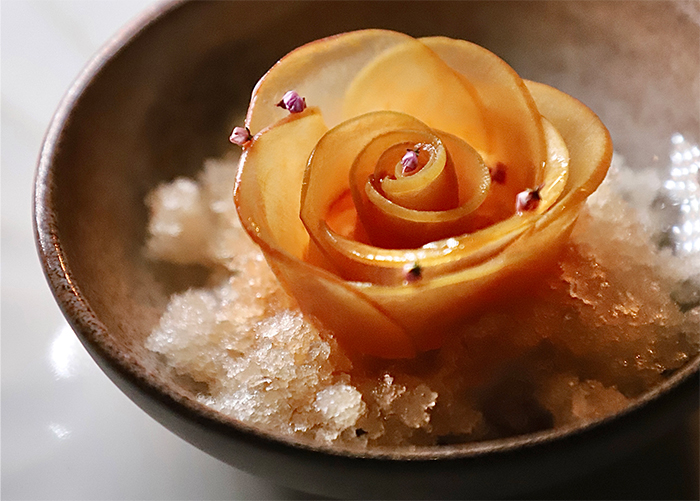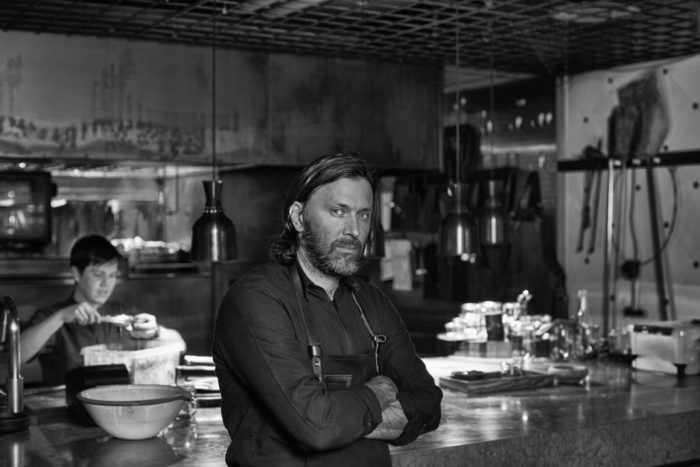Chef Niklas Ekstedt is blazing his own trail in Nordic cuisine with a focus on ancient cooking techniques, where fire plays the central defining role.
Ekstedt is an alluring Michelin-starred restaurant located in the heart of Stockholm where Swedish chef Niklas Ekstedt pioneered the use of fire as the only element of heat to cook, turning out Nordic wonders full of character, intensity and personality. Niklas has recovered Swedish historic ways of cooking and brought them to the present with the goal of honoring the times before electricity, as well as his Jämtland-heritage.
The Greeks had Hephaestus, god of artisans, blacksmiths, fire, metallurgy, sculpture and volcanoes who made all the weapons of the gods in Olympus. The Romans had Vulcan, who belonged to Varro, the most ancient stage of Roman religion, and Norse mythology had Logi, a giant fire god and personification of fire. These are just a few examples of the big role fire plays in our history, whether mythological or real. For Niklas Ekstedt, learning about history became a tool to create a unique culinary perspective thirteen years ago in Stockholm.
He had a very defined idea: to learn about the pre-electricity cooking methods used in Sweden and recover them to bring them into the present and create a contemporary restaurant. He knew he didn’t want it to be smoke and mirrors or just a theatrical interpretation of the past. He wanted to rediscover how smoke was used, or cast iron, or fire or a grill and implement it to create a modern top restaurant that focused on the how instead of the what.
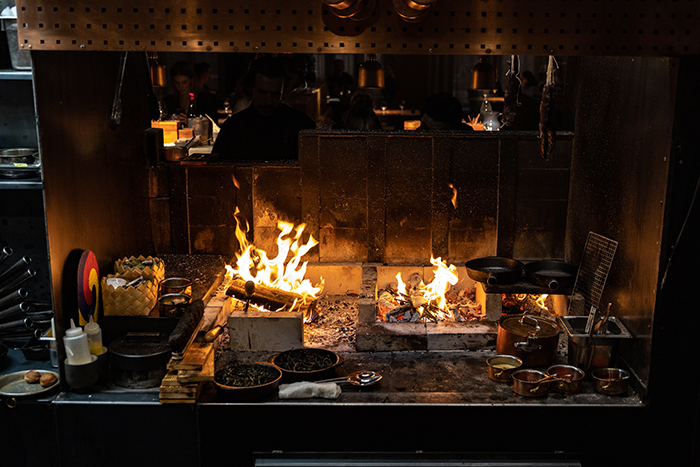
Fire is heat, and heat is an energy source, but Ekstedt’s restaurant goes deeper than that. The technical aspect of it is the essence with the vision being sparked out of the chef’s curiosity for the past. He studied and used that past and knowledge to make food more real, delicious and flavourful in today’s modern world. It’s almost a practical approach to proving history. How could people cook delicious food two hundred years ago without a convection oven, a Pacojet or an induction stove? Well, just like Niklas, his Argentinian head chef Florencia Abella and the rest of the team do at Ekstedt today. Here is the complete story.
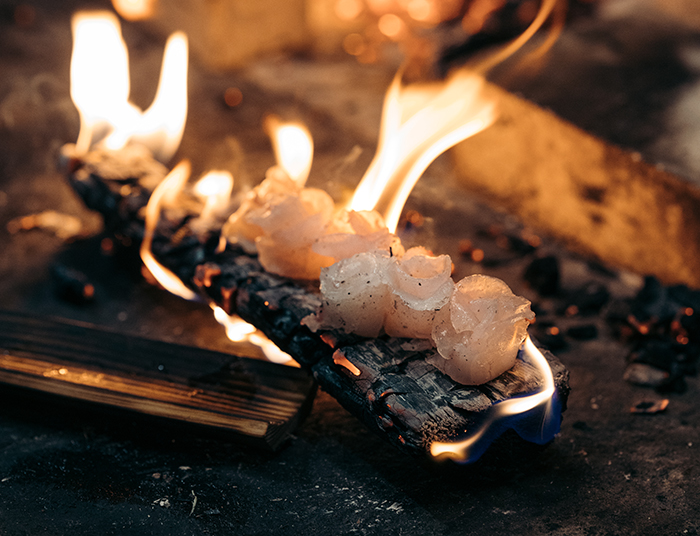
A Chef Is Born
Before going to culinary school, when Niklas was just a child, his family moved to Jämtland in Northern Sweden. There, they switched city life for one that was connected to nature, and also came closer to the Sami, a Nordic indigenous tribe and the only one left in Europe. Food was important for his parents. They started buying produce and meat from the Sami instead of going to the supermarket and cooking more and more. Not only that, they were also strict with Niklas and his brothers about it. “I didn’t have a cola until I was 16 and we had nothing close to a fast food restaurant anywhere near us”, he tells,
At only fifteen years old, young Niklas Ekstedt had to choose between staying in the north of Sweden to go to culinary school, or moving back to the south of the country with his parents. That decision would take him to the place where he actually found his passion and what he is doing to this day at his restaurant Ekstedt, as well as his other projects in Sweden and abroad. He chose culinary school.
The school lasted three years and took him through the entire hospitality chain. For Swedish kids, those schools are the perfect place to go to, to get a job at any of the popular ski resorts or restaurants of the country. However, during the first two years of his studies, Niklas wasn’t the most dedicated student. He was young, his parents were in another part of Sweden and he preferred skiing over studying. “The kids that were boarding like I was, were more like the outlaws of the school. Skiing and snowboarding has always been a big part of my life and back then we would spend more time in the mountains than in the classrooms.”
It all changed when a new teacher came into the school. He taught them how to cook real food and at the same time opened the door to the unknown world of fine dining to the young students. He showed them books by Paul Bocuse and Marco Pierre White and told them stories about his years in the best kitchens in Europe. It was like an alien to Niklas who had never heard about celebrity chefs or Michelin stars in his life. It was a revelation that, combined with a back injury, forced him out of the mountains and into finding that adrenaline and focus in something different. The kitchen became his sport.
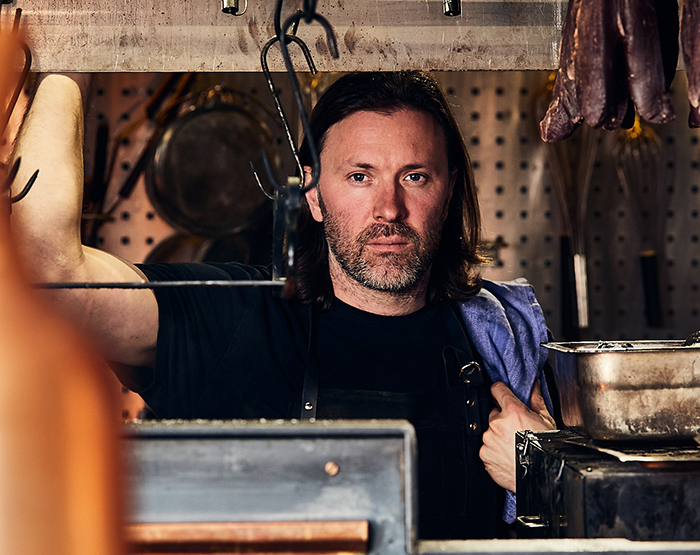
The American Dream, The Spanish Revolution
Ekstedt’s parents were used to getting calls from his school. Most of them were to give them bad news. This time, and after some months of cooking, the call was to inform his father that he was talented in the kitchen and to encourage him to support that career for his son. And so came the time for a second big decision in his life: Where to go next. France seemed like the obvious option, but Niklas only spoke Swedish and English and didn’t want to go through the terrible experience of going into a high level restaurant in Paris without knowing the language.
The six degrees of separation never fail, but in Niklas Ekstedt’s case, the story is cool enough to write a whole other article about. His uncle, renowned painter, sculptor and graphic artist Peter Tillberg, whose works are still displayed at the Modern Art Museum in Stockholm, was a very famous contemporary artist. At his peak he was surrounded with a lot of well traveled, jet set, creative individuals, many of whom loved to eat well. When the time came to look for a restaurant that could welcome his nephew, he ended up calling none other than John Lennon. He then asked Yoko Ono, who had a great friend called Charles Trotters in Chicago. The American dream on steroids.
“In 1996 Yoko Ono called Charles. I finished culinary school on Friday and on Sunday I was on a flight to Chicago. It was crazy. I had only been to London once in my life and had never been to America. I was only eighteen and it was mind-blowing. Overwhelming. I started as a stagier at Charlie Trotter’s, which was one of the best restaurants in the country. He was a pioneer in terms of getting the best quality product and I learned so much during that time, but a great advantage I had over a lot of the other cooks was my closeness to nature as a child. I already knew, because of my father and the Sami, how to clean different animals and that made me stand out. No nineteen year old kid in Chicago knew how to clean a beast or fish like me in that kitchen.”
After a few years at Charlie Trotter’s, a short run at L’Orangerie in Los Angeles, Niklas had to leave America and asked the Trotter for advice. Go to Michel Bras or to Catalonia, he said. He ended up doing the second. There, Ferran and Albert Adrià were spearheading a culinary revolution called elBulli. In 1999 Ekstedt worked for a season at the legendary restaurant, to then move to Copenhagen to work with a pre-Noma René Redzepi in a city that looked nothing like today. “Copenhagen was nothing like it is now but even then, when he was in the French restaurant named Pierre André, René talked about how his city would become a big culinary capital, and he was right”.

Going Back Home
After a short stint at Alain Ducasse, and an offer to work with Gordon Ramsay, Niklas decided it was time for him to go back to his own country and do it for himself. He opened a small restaurant. A twenty seat place located in what used to be a small café in a property owned by his grandfather. He was still completely unknown, in spite of his years at some of the world’s top restaurants. But he had a great team of people supporting him, including his friend René Redzepi, who came to Sweden to help him out for a few months during the opening.
Even though the restaurant had no clear concept and Niklas didn’t really have a defined personal style of cooking, the restaurant was a hit. It lasted six years, and propelled Niklas into a household name in Sweden and opened the doors to opportunities in television – further expanding his reach. To the traditional tv industry, he was a breath of fresh air, a young chef with a different point of view.
The restaurant was embraced by critics, food writers and guests, but came to an end by 2007 as Niklas moved back to Stockholm. By then, he was a regular on TV, publishing books, being a part owner in a brasserie in the city and just a few years after, in 2009, he became a father. In a way, if 2009 looked anything like today with social media and overexposure, his life would have looked like a dream, and in a lot of ways it was, but at the same time he found himself at a crossroad, with no clear direction and at a time when some of his Nordic colleagues and friends were creating a revolution.
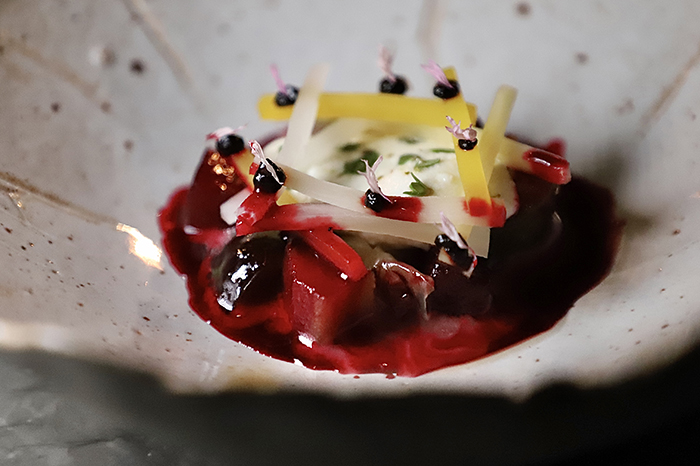
A New Nordic, A New Dad, A New Direction
In the heart of the Nordic culinary boom, Niklas was working with industry giants like René Redzepi and Magnus Nilsson. However, he took a step back to focus on family life, closing his restaurant to spend time with his newborn. Meanwhile, his peers were buzzing about replacing traditional French and Italian ingredients with local Nordic ones, sparking a culinary revolution. While fascinated, Niklas knew he wanted to blaze his own trail. He decided that when he returned to the restaurant scene, he’d have to do something distinctly different.
“I was extremely happy to become a father. I’m very happy that I made that decision to stay with my son, but I felt lost in my career. I also felt a lot of pressure to open a new restaurant, and knew that it would be reviewed by everyone right from the start”, he explains. He jokes that sometimes he feels like a culinary Forrest Gump, meaning that he just keeps going and going and in a way stumbles into his next chapter in life or in his career. And that precisely what happened next.
Niklas had somewhat of an epiphany: why not shift the spotlight from ingredients to cooking techniques? Diving into research, he unearthed a trove of nearly lost Nordic cooking methods. Meanwhile, life took a cozy turn with a new home in Stockholm’s Ingarö island. That summer, he planned to set up a normal barbecue, but fate had other plans. Instead, he found himself chopping birch wood, crafting a fire pit reminiscent of childhood times spent in the mountains. This makeshift hearth turned into the family’s summer kitchen, blazing day and night. While grilling was the norm, impatience led him to thrust a cast-iron pan directly into the flames one day. This fiery experiment sparked the unique concept behind Ekstedt.
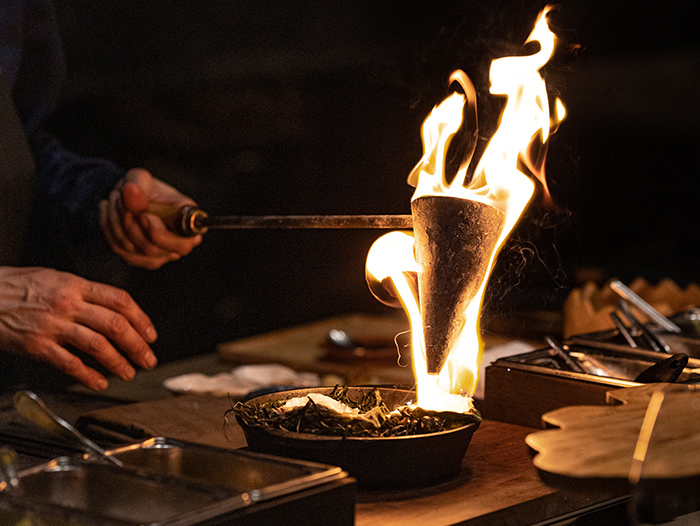
Ekstedt: A New Beginning
All chefs know that you need a lot more to open a successful restaurant than talent or fame. In 2010 the stars aligned for Niklas, who all of a sudden saw himself with a business partner, a wonderful location in Stockholm, with the perfect size, with a wood oven, great extraction, permits, great human talent to help him in the kitchen and in the front of house and an exciting idea in his head. His wife confirmed it: “Take it. Do it. This means something!”
“The beginning was difficult. We had to research a lot but then also actually learn how to control and manipulate fire. But what helped us a lot was that everyone involved since the beginning loved the vision and was up for the challenge. We were ready to make this happen and to learn together. We were so focused on getting the technical aspects of the project right that we all forgot about the pressure of reviews and stars. We were more worried about the wood, the smoke, about how to build the oven, about how to control the temperatures, the intensity and the flavors. It was one of the most rewarding times in my life to this day”, tells Niklas with a big smile.
Ekstedt opened in November of 2011. After just a couple of months, the late A. A. Gill came and wrote a wonderful review about his experience, and like him, all the major food critics and newspapers, followed by a coveted Michelin star. Niklas still remembers that the Zagat guide named them the most interesting restaurant in the world in 2012, and after visiting and trying the menu, I can testify that after twelve years, it is still an incredible food experience.
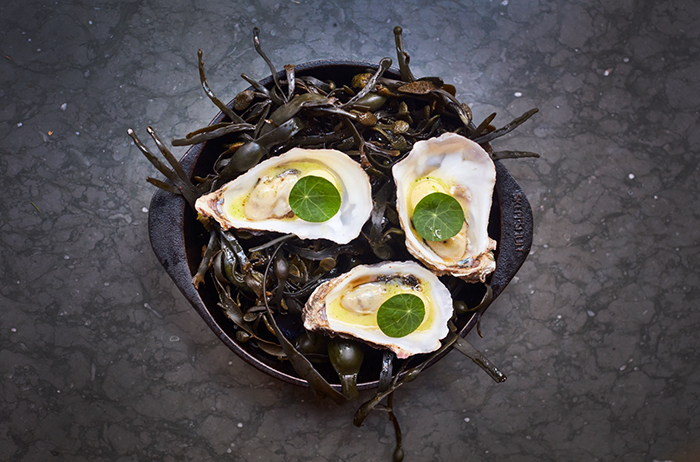
Historic Technique
Out of all the elements, fire is usually perceived as the most powerful or dangerous one. Maybe it’s the aggressive brightness, or the extreme heat. Maybe, as we get new sources of energy, we forget how extremely important fire was to our evolution and only associate it with destruction and danger. But in reality, the key when talking about elements is balance. All of them work as a cycle and are just as powerful and important for our existence. Wind can make fire grow, water can make it disappear.
The human challenge is controlling the elements, and in the case of Niklas Ekstedt, years and years of experience have led him and his team to becoming masters at it. Using the cast iron stove, the smoker, the open fire, the wood oven, the flambadou and the cast iron tools, the recovered historic techniques that they worked so hard on. Almost intuitively manipulating fire to create elegant and balanced dishes that exude authenticity and the chef’s very well defined personal style. No theatre, just history brought to the present to create real, flavorful and unique dishes that in a way display the culinary culture of Sweden.
Sweden is deeply connected to the forest, to the point that it is ingrained even into the language. In Swedish, the traditional surname Granqvist means pine-twig, Ekstedt means place of the oak, and Björk means birch. They don’t have a specific name for a garden. They use trädgård, which can be translated into wood-yard. It is in their names, it surrounds them and it affects every part of their lives. And it isn’t lost on Niklas that his last name, also the name of his restaurant, is one of the igniting forces needed to make the whole vision a reality.
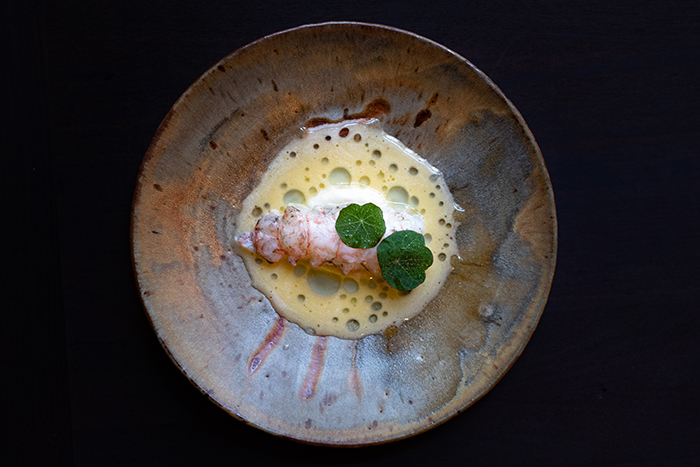
The Dishes
Guests start their night at Ekstedt with a first bite. A charcoal cream with dry aged raw beef and vendace roe, served in a warm lounge, that most of all feels like a modern entree to a prominent viking’s longhouse. Then the real Ekstedt experience begins by stepping into the heart of the kitchen for three powerful snacks that serve as a show of intentions. An ember baked scallop and roe goes first followed by an explosive wild oyster with beurre blanc prepared with a flambadou, a cast iron cone that is placed directly into the embers to then use to melt fat and drip it into the oyster, all with a big flame that makes guest wake up and get fired up for an exciting night to come.
The dishes change from season to season and Niklas also carefully selects the top quality local ingredients. Other stand outs of the menu are the seaweed fired langoustine with celeriac and solaris; the wood oven baked sourdough bread with butter and smoked whey; the sniper smoked reindeer with cauliflower mushroom and spruce flowers and the wood oven fired cep mushroom soufflé with spruce and blueberries. A must? To get the only dish that can be added as an extra to the menu: a waffle made à la minute with a side of baked Edhe Guld cheese and served with Markisinnan cheese and elderberry.
The evolution of Ekstedt over the past one and half decade has been evident mostly on the dishes that they are able to put on the table. Niklas Ekstedt confesses that in the beginning, they were still figuring out many of the techniques they now master. But with time and experience, every flavor has gotten more clear and balanced and what they aim for is to reduce the gap between their guests and the kitchen, to go even deeper into their connection to nature and to the history of the Swedish culinary culture. The next step in his path is taking him even closer to his roots, to nature and to the Sami ways, and I can’t wait to see how that translates into the experience in the restaurant.
Restaurant Ekstedt
Humlegårdsgatan 17, 114 46 Stockholm, Sweden
www.ekstedt.nu
